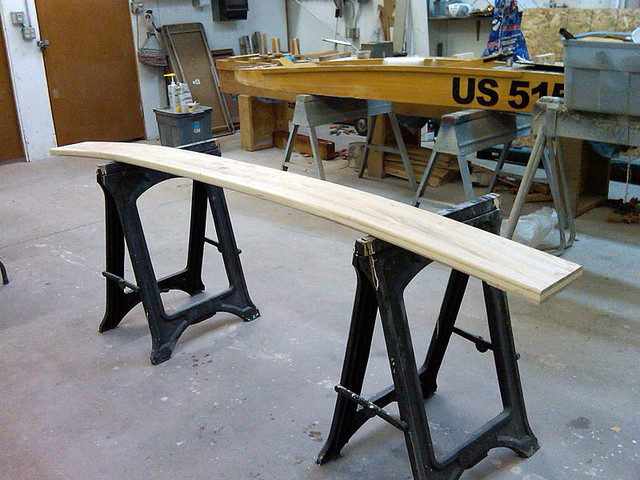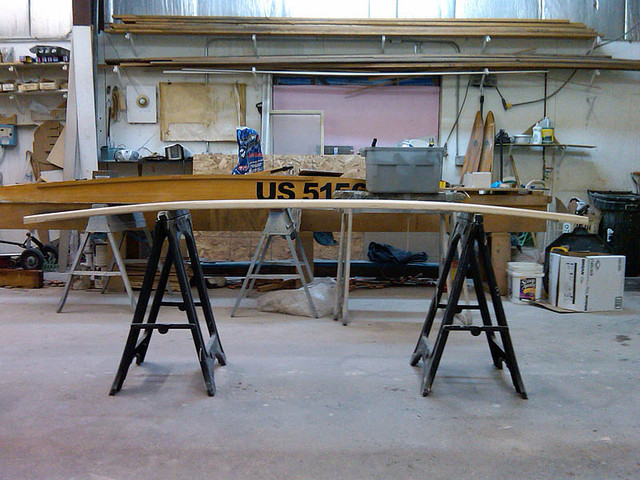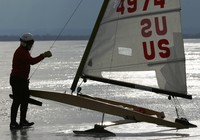The plank is off the jig...
(actually, it's back on the jig to let the epoxy completely cure...)
I pulled all the clamps off, quickly cleaned off the excess epoxy, and eagerly checked the deflection. It looks pretty good, about 145 lbs/inch so it deflects just under 1 3/4 inches with me on it. I'm guessing it will stiffen up a bit as the glue gets to full cure, and rounding the edges will probably soften it, so it will probably end up very close to this value.
With Jim Nordhaus' help I cleaned up one edge in the joiner and trimmed the width in the table-saw. Then I trimmed the ends off and rounded over the edges.
One disappointment is that I apparently didn't use enough clamps in a few spots, and there is a bit of a gap visible. They aren't more than 1/4" deep, so I'm pretty confident I can get glue in and it won't be a problem.
I'm considering adding a layer of glass, but I think I'll probably just coat it, mount the hardware, and go sailing!
It's really a "quick and dirty" project. I think it will end up as a backup plank and I'll make another one (really carefully) over the summer. maybe I'll even spring for a set of the new Struble chocks!
- GeoffS's blog
- Login or register to post comments
- 5601 reads



Comments
One comment, two questions
Through trial and error, I've arrived at using deflections identical to yours. A question I've never heard addressed is why the arch at all? Also, what is your thinking on the fiberglass (or kevlar) wrap?
rolley
The simple answer about the curve is...
... because the rules (B.8) say "The underside of the runner plank shall be higher than the underside of the outside ends."
I've heard Jan Gougeon (a stiff plank advocate) that he would prefer to be able to build a straight plank.
As for wrapping in fiberglass (kevlar isn't allowed), many people do it (ex. Ron Sherry). My last plank didn't have any over-wrap and it held up to some serious abuse for six years. The big reasons that I've heard to do it are: protection (esp. on the leading-edge and underside), some additional stiffness, and cross-grain strength. There may be other reasons I don't know of. Hopefully someone can weigh in; I'm curious to hear more.
Thank you for your reply.
Not being a DN guy, I wasn't aware of those requirements. I added a layer of Kevlar to the bottom side of an acquired springboard once for added strength. I have a hickory board in the pile with a nice bow to it. I think it would look good as a runner plank. I seem to remember a rule about laminations being required for DNs.
rolley
Laminations?
The word "lamination" is used a number of times in the plank specs, but I don't think they are required. I believe a naturally (or steam) bent piece of wood would probably be OK.
To be sure, you could e-mail one of the members of the Technical Committee and ask for an clarification or interpretation.